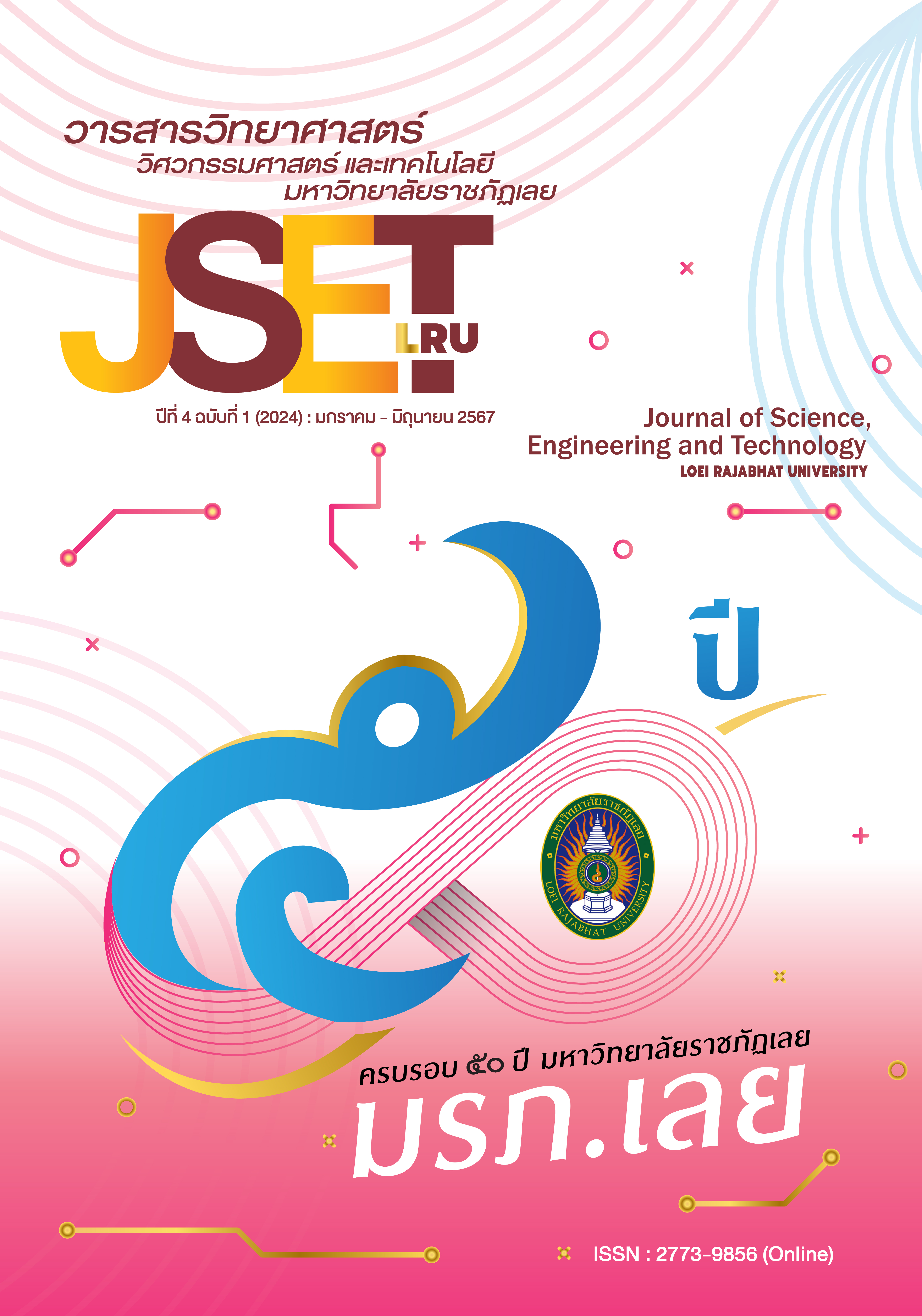การยืนยันตัวตนสำหรับเว็บแอปพลิเคชันแบบพหุปัจจัย
คำสำคัญ:
การให้ยืมรหัสผ่าน , การยืนยันตัวตนแบบพหุปัจจัย , การยืนยันตัวตนแบบไม่มีการเก็บสถานะ , คิวอาร์โค้ดบทคัดย่อ
การล็อกอินเข้าสู่ระบบเว็บแอปพลิเคชันด้วยวิธีการใช้รหัสผ่านเป็นวิธีที่พบเห็นทั่วไปในระบบสารสนเทศต่างๆ สำหรับเว็บแอปพลิเคชันที่ต่างกันการจำรหัสผ่านหลายรหัสในการเข้าสู่ระบบยังคงเป็นปัญหาที่เกิดขึ้นกับผู้ใช้ที่มีโอกาสในการลืมรหัสผ่าน ทำให้เกิดการปัญหามากมายจนนำไปสู่ช่อง นอกจากนี้การให้ผู้อื่นยืมรหัสผ่านจะทำให้เกิดปัญหาการถูกขโมยรหัสผ่านจากผู้ไม่ประสงค์ดี นับเป็นช่องโหว่สำคัญที่จะนำปสู่การถูกโจมตีทางไซเบอร์ อย่างไรก็ตามนักพัฒนาระบบสารสนเทศได้นำการยืนยันตัวตนแบบพหุปัจจัยเข้ามาใช้เพื่อให้เกิดความปลอดภัยในการใช้มากขึ้น แต่ยังคงมีข้อจำกัดในด้านค่าใช้จ่ายและความสะดวกสบายในการใช้งาน ดังนั้นงานวิจัยนี้มีวัตถุประสงค์เพื่อสร้างระบบการยืนยันตัวตนสำหรับเว็บแอปพลิเคชันแบบสองขั้นตอนด้วยคิวอาร์โค้ด โดยการใช้เทคโนโลยีการยืนยันตัวตนแบบไม่มีการเก็บสถานะ (Stateless Authentication) ด้วยเทคโนโลยี JSON Web Token (JWT) ซึ่งออกแบบในการเข้าใช้ระบบสารสนเทศหรือเว็บแอปพลิเคชันสองขั้นตอนได้แก่ 1) การยืนยันตัวตนของผู้ใช้เพื่อรับ user_token และ 2) การเข้าสู่เว็บแอปพลิเคชันด้วยการสแกนคิวอาร์โค้ด ผลการทดสอบจำลองการใช้งานด้วยผู้ใช้จำนวน 30 ถึง 240 บัญชี พร้อมกันพบว่ามีประสิทธิภาพด้านเวลาในการตอบสนอง (Response Time) ที่เหมาะสมในการใช้งานรองรับผู้ใช้ที่ 90 บัญชี ที่เวลาเฉลี่ย 4 วินาที ในขณะที่ผู้ใช้ 240 บัญชีเข้าระบบพร้อมกันมีความเร็วเฉลี่ยประมาณ 8 วินาที ส่วนด้านประสิทธิภาพพบว่าได้รับการประเมินจากผู้เชี่ยวชาญที่คะแนนเฉลี่ย 4.50 อยู่ในระดับมากที่สุด
เอกสารอ้างอิง
ชูศรี วงศ์รัตนะ. (2560). เทคนิคการใช้ สถิติเพื่อการวิจัย. กรุงเทพฯ: อมรการพิมพ์.
Aura, T., and Nikander, P. (1997). Stateless connections. Lecture Notes in Computer Science, 1334. Springer, Berlin, Heidelberg.
Bunaramrueang, P., and Kowpatanakit, P. (2023). Digital identity and authentication. Thammasa Law Journal, 52(4), pp. 1035-1097.
Chaimueng C., Puangpronpitag, S., and Pongsiri, V. (2012) Single point authentication by multiple factor authentication. Journal of information science and technology, 3(1), pp. 53–62.
Jones, M., Bradley, J., and Sakimura, N. (2015). JSON Web Token (JWT). RFC 7519, DOI 10.17487/RFC7519.
Lee, S., Jo, J. Y., and Kim, K. (2018). Authentication System for Stateless RESTful Web Service. Journal of Computational Methods in Sciences and Engineering, 17, pp. 1-14, DOI: 10.3233/JCM-160677.
Mitchell, C. (2013). A Novel Stateless Authentication Protocol. Lecture Notes in Computer Science, vol 7028. Springer, Berlin, Heidelberg.
Rahmatullo, A., Aldya, A. P., and Arifin, M. N. (2019). Stateless authentication with JSON Web Tokens using RSA-512 Algorithm. INFOTEL, 11(2), pp. 36-42, DOI: 10.20895/infotel.v11i2.427
Rukpakavong, W., Subsomboon, K., and Nilpanich, S. (2022). Mutual authentication for cardless ATM withdrawal using location factor. SNRU Journal of Science and Technology, 14(2), pp. 1-8, DOI: https://doi.org/10.55674/snrujst.v14i2.245396
Sainui, J., Jankaew, N., and U-seng, H. (2021). A prototype of seminar registration system using face authentication. Journal of Applied Information Technology, 7(2), pp. 40-50.
Sarawan, K. (2018). Improving Web application security by virtual password Authentication. TNI Journal of Engineering and Technology, 6(1), pp. 19-23.
Saetang, W., and Boonkrong, S. (2017). Effectiveness Analysis and hash function. Journal of Food Health and Bioenvironment Science, 10(2), pp. 81-94.
Titiakarawongse, C., and Boonkrong, S. (2023). A Study of password management behaviors of young People. Applied Science and Engineering Progress, 16(4), pp. 1-16, DOI: 10.14416/j.asep.2023.01.001.
Thumsiraruk, P., and Puangpronpitag, S. (2015). Problem analysis and security testing of one time password. Technology, (37)1, pp. 10-24.
Vongsingthong, S., Paiboonsak, J., and Nakaresruengsak, S. (2023). Machine learning in biometric authentication. Science and technology journal Mahasarakham university, 42(4), pp 97-107.
ดาวน์โหลด
เผยแพร่แล้ว
ฉบับ
ประเภทบทความ
สัญญาอนุญาต
ลิขสิทธิ์ (c) 2024 Loei Rajabhat University

อนุญาตภายใต้เงื่อนไข Creative Commons Attribution-NonCommercial-NoDerivatives 4.0 International License.
บทความที่ได้รับการตีพิมพ์






